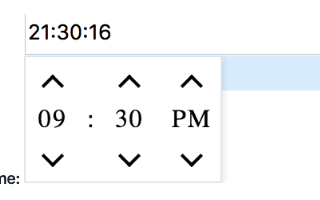In today’s digital age, web application security is more important than ever. Angular, a popular web framework, has a number of built-in security features, but there are still common vulnerabilities that can put your application at risk. In this article, we will discuss some of the most common vulnerabilities in Angular applications and explore solutions and libraries that can help you secure your application.
- Cross-Site Scripting (XSS)
Cross-site scripting (XSS) is a type of vulnerability that allows attackers to inject malicious code into a web page viewed by other users. In an Angular application, XSS can occur when user input is not properly sanitized or validated. To prevent XSS attacks in your Angular application, you can use the DOMPurify library, which is designed to sanitize user input and prevent malicious code from being executed.
Example:
import DOMPurify from 'dompurify';
const sanitizedInput = DOMPurify.sanitize(input);
- Cross-Site Request Forgery (CSRF)
Cross-site request forgery (CSRF) is a type of vulnerability that occurs when a user is tricked into executing an unintended action on a website. In an Angular application, CSRF can occur when a malicious actor sends a request to the application with the intention of modifying data or executing a specific action. To prevent CSRF attacks in your Angular application, you can use the ngx-cookie-service library, which allows you to set and read cookies in your application.
Example:
import { CookieService } from 'ngx-cookie-service';
const csrfToken = this.cookieService.get('csrfToken');
- Injection Attacks
Injection attacks occur when untrusted data is sent to an interpreter as part of a command or query. In an Angular application, injection attacks can occur when user input is not properly validated or sanitized. To prevent injection attacks in your Angular application, you can use the OWASP Sanitizer library, which is designed to sanitize user input and prevent malicious code from being executed.
Example:
import { Sanitizer } from '@angular/core';
const sanitizedInput = this.sanitizer.sanitize(SecurityContext.HTML, input);
- Broken Authentication and Session Management
Broken authentication and session management occur when attackers gain unauthorized access to a user’s account or session. In an Angular application, broken authentication and session management can occur when authentication tokens or session IDs are not properly protected. To prevent these types of attacks in your Angular application, you can use the ngx-webstorage library, which provides a secure way to store session data in your application.
Example:
import { LocalStorageService } from 'ngx-webstorage';
this.localStorageService.store('user', { username: 'example', password: 'password' });
- Insecure Direct Object References
Insecure direct object references occur when an application exposes a reference to an internal object, such as a database record, in a URL or parameter. In an Angular application, insecure direct object references can occur when an application exposes sensitive data or functionality to users who should not have access. To prevent these types of attacks in your Angular application, you can use the Angular Guards library, which allows you to control access to routes and components in your application.
Example:
import { CanActivate, ActivatedRouteSnapshot, RouterStateSnapshot } from '@angular/router';
export class AdminGuard implements CanActivate {
canActivate(route: ActivatedRouteSnapshot, state: RouterStateSnapshot): boolean {
if (currentUser.role === 'admin') {
return true;
} else {
return false;
}
}
}
In conclusion, securing your Angular application is essential to protect your users’ data and prevent malicious actors from exploiting vulnerabilities. By using libraries like DOMPurify, ngx-cookie-service, OWASP Sanitizer, ngx-webstorage, and Angular Guards, you can add an extra layer of security to your application and mitigate common vulnerabilities like XSS, CSRF, injection attacks, broken authentication and session management, and insecure direct object references.
However, it is important to remember that security is an ongoing process, and there is no silver bullet for completely securing your application. It is essential to stay up-to-date with the latest security threats and regularly review and test your application’s security measures to ensure that they are effective.
By following security best practices and utilizing the appropriate libraries and tools, you can help protect your Angular application from common vulnerabilities and keep your users’ data safe and secure.



